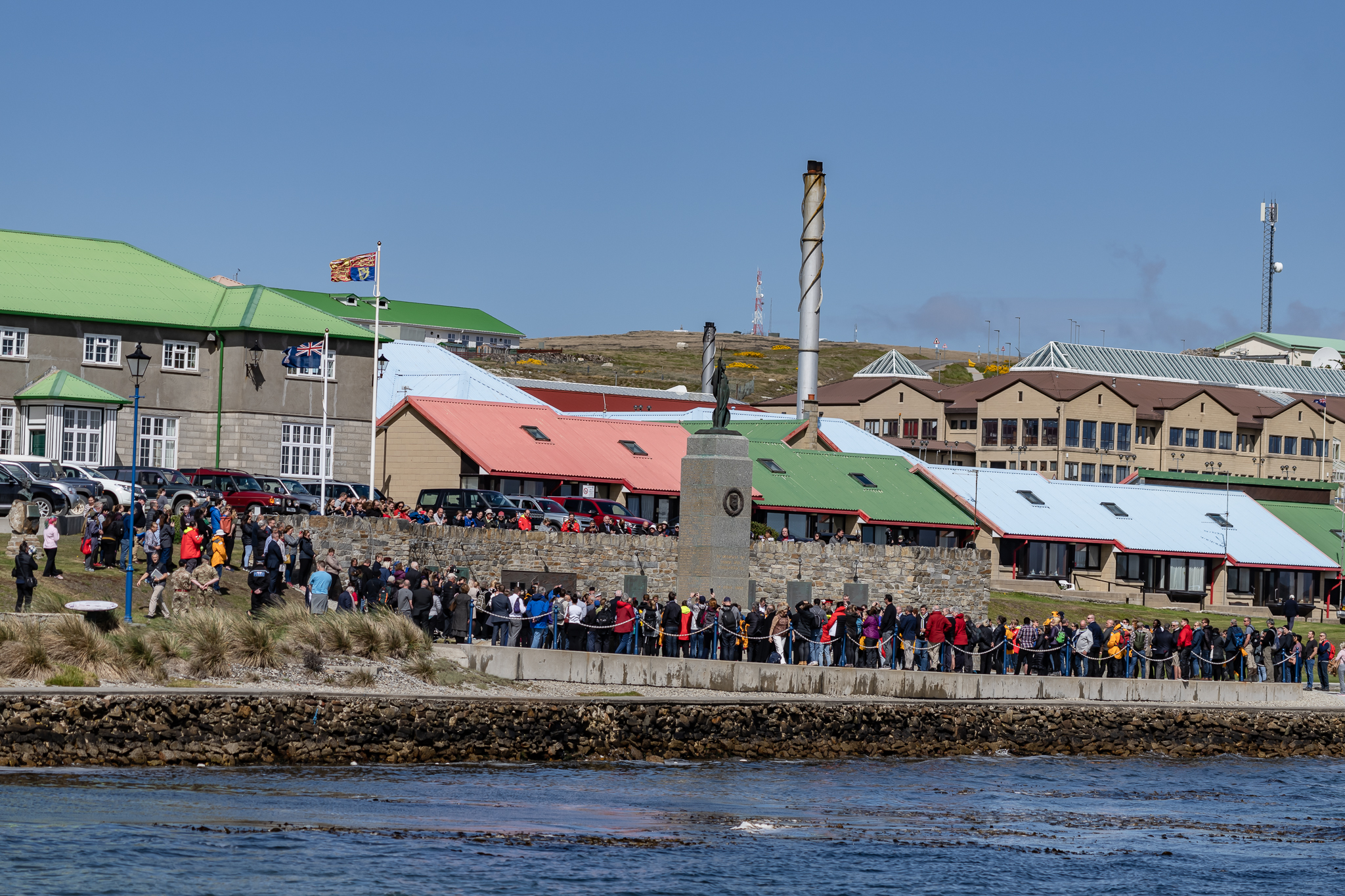Stanley, the Capital of the Falklands, is a strange town. It has had two notable lives, the first starting in the 1700’s as a whaling and Antarctica expedition hub and then forty years ago, a war with Argentina. The Museum, in town, gives about half of its coverage to ancient times and the other half to the British victory, resulting in the ejection of the Argentinian occupiers. I won’t delve into the politics here, but to have an archipelago in the Western Hemisphere, where cars drive on the opposite side of the road, at the very least is quaint.
I was up early, as is my customary pattern, only to be confronted by a bank of fog. It was warmer, we’re no longer in the zero degree Antarctica waters, but a wind was blowing and there was little visibility. A half hour later, I could see land and I could see that we were close to the bay, where Stanley is located. The fog came in once again, but a few minutes later a birding companion and I were spotting birds. South American Terns and Imperial Cormorants were first, then the first of the Black-browed Albatrosses (there are over 800,000 in the Archipelago). My colleague spotted penguins on the beach, my camera resolved them into Gentoos, we hope in the coming two days to see Rockhopper, Magellan, King and rarest, Macaroni Penguins.

The Steamer Ducks, endemic to the Falklands, were everywhere one looked as were the Kelp Gulls which approached the ship with a few Dolphin Gulls thrown-in. The bay opened in front of us and a town with bright roofs appeared. We were soon running down to an early breakfast and boarding a “water taxi” into town. For once, there was no need to don waterproof gear and extra layers of clothing.
Once in town we walked! Nearly six miles by the end of our day. I was keen of finding new bird species but early on we mainly saw the same water species and many, many House Sparrows on land. An old church was first on the itinerary, then close by, a whale bone monument. We then spotted in the distance a huge gathering of people near a memorial and later discovered that Princess Anne was there to commemorate the 40th Anniversary of the war with Argentina.


We had been walking down the coast of Stanley and decided to turn inland where we began to have more luck with birds. A long-tailed meadowlark, with a bright red breast was wound in a field along with a small dark bird, a Black Cinclodes. Two Falkland Thrushes then popped onto the nearest fence and we finally had seen birds that weren’t House Sparrows!


A stop for coffee was followed by a quick visit to the Museum where we found this strange dichotomy between old whaling town and the Argentinian War. There were commemorations all over town to the War, memorials, thin metal statues on a hillside for each fallen British soldier, more memorials as we walked now in the opposite direction.
After spotting a Ruddy-headed Goose, we decided that it was time for a bite to eat at the old pub, The Globe, and then a return trip to the ship. It was an interesting visit to this quaint city full of Land Rovers and war memorials.



The next two days we’ll be back to our Expeditions on two of the smaller Falkland Islands.

